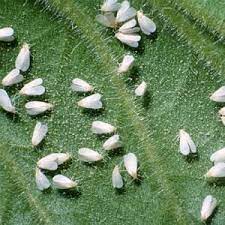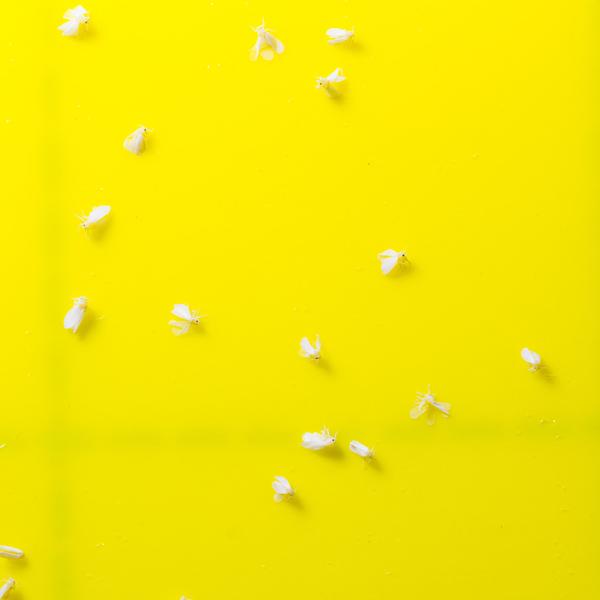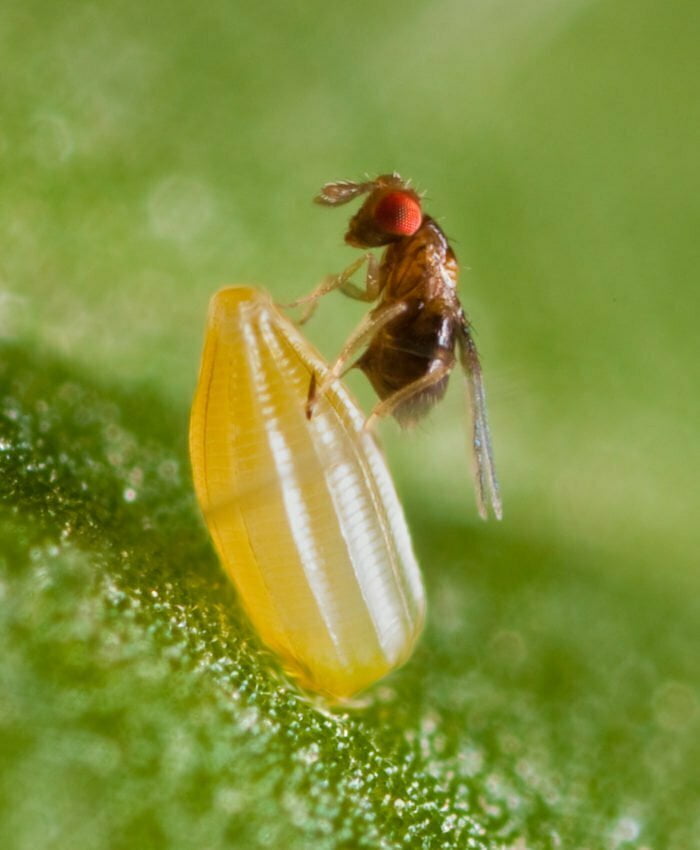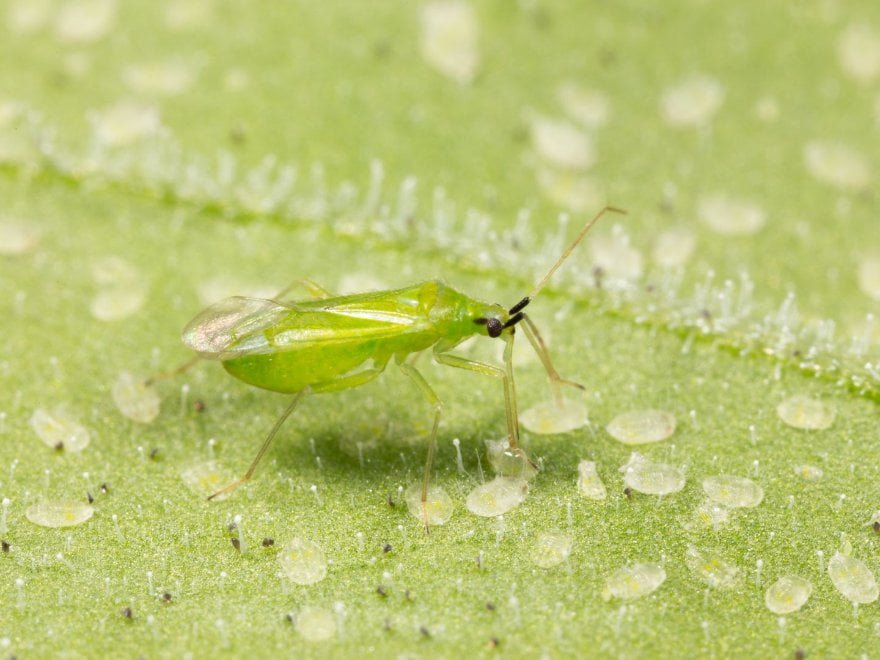English
Whiteflies are common pests that marijuana growers struggle with every year. These little buggers can wreak havoc in any grower’s garden, and once they’re spreading, they’re very difficult to deal with. But before we describe how to fight them, let’s tell you a little more about them.
Whiteflies (Aleyrodoidea)
The whitefly is a very small white insect about 1.5 to 2 mm in size with two pairs of wings. It feeds on plant juices, which it sucks mostly on the underside of the leaves of the cannabis plant, which it then curls up. They attack plants in both outdoor and indoor cultivation and can transmit viral diseases that make plants even more vulnerable.
They move quickly and are easy to spot as they fly around an infested plant during the day. Their numbers can increase rapidly, with each female whitefly being able to lay around 100-200 eggs in her lifetime. Eggs are mainly on the leaves where they are very difficult to remove.
How to prevent whiteflies infestations and what to do when an attack is inevitable?
The main principle is not to overwater the cannabis plants and always allow the soil to dry out well between waterings. Do not forget good drainage. But we probably can’t stop the whitefly from entering our cannabis plants. It certainly pays off to inspect the cannabis plants carefully and take immediate action if the first flies are found. Yellow glue boards serve as a preventive measure, but mainly as a signal to detect the presence of whiteflies. They are attracted by the intense yellow colour of the plates and stick to the non-drying glue on contact.
It is not easy to determine the appropriate product for their eradication, but spraying with Mospilan works quite well. Contact poisons work well on all evolutional stages of the whitefly except adults. This is because the adult fly has a fine waxy layer on its wings that defends it very well so that the products do not penetrate to its body.
In addition to an insecticide, we can also try a tested “old granny” advice. For example Tobacco and garlic : Boil 200 g of tobacco and 200 g of garlic in a litre of water, let stand for a day, dilute in a ratio of 1:10 and spray directly on those flies. This recipe can also be used as a preventative treatment for marijuana plants.
Predators can be far more effective
Sometimes it happens that pesticides just don’t work. In this case, biological protection in the form of natural predators can help. The options are :
The parasitic wasp (Encarsia formosa)
This is a tiny wasp, 0.6mm in size. The females lay their eggs in the larvae of whiteflies. The parasitized resting stage of the whitefly – puparium turns dark after about 10 days. After another 10 days, the adult wasps hatch. One female wasp lays up to 300 eggs in her lifetime! It is important to note here that breaking off the leaves with dark puparia of the flies and removing them also results in the destruction of the unhatched useful wasps.
The predatory Miridae (Macrolophus caliginosus)
The predatory Macrolophus caliginosus is relatively slender, with an adult body length of about 6 mm. Both larvae and adults are light green in colour. Typical are the long legs, which enable the Macrolophus caliginosus to walk on the surface of plants, which are heavily covered with hairs. Neither adults nor larvae are very demanding of food. They feed not only on whiteflies, but also on aphids, silkworms and thrips. But they prefer eggs, larvae and puparia of whiteflies.
Like everything, biological control has its drawbacks. Neither wasps nor Macrolophus caliginosus can be acquired immediately and cannot be stored. Cannabis plants must be monitored and if the first occurrence is detected, predators must be ordered immediately from specialist stores and placed on infested cannabis plants immediately upon delivery.
Published by Peca Sarm
20/12/2021choose and buy cannabis seeds from our offer
our pleasure




























